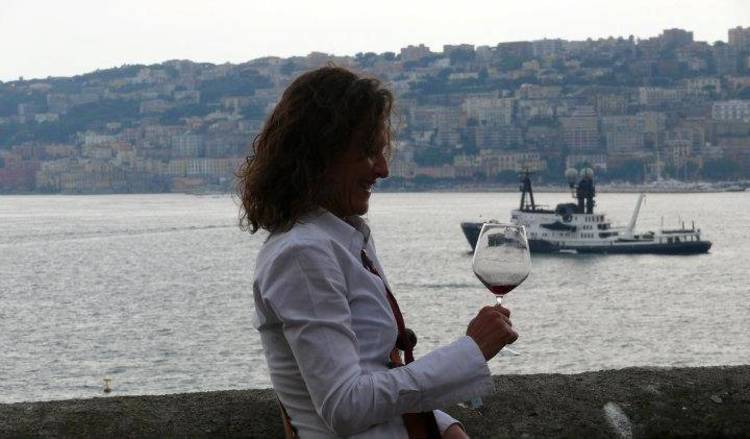


Grapes above the Spanish Quarter and under Certosa di San Martino. Grapes on the hills of Posillipo. Grapes in Agnano, on the edges of Astroni, the volcano that went dormant 3,700 years ago and is now a natural park. Grapes as far as Camaldoli, between large houses built during the real estate boom of the 50s and 60s immortalized on film by Francesco Rosi. It makes sense.
Naples is the one major metropolis with working vineyards within its walls, throwbacks to monastic gardens, like gallery owner Peppe Morra’s famous Vigna di San Martino, which boasts a view of the entire city. Once again Partenope unveils a fascinating, hitherto unknown side. We’re not talking about the leftover land of some old farmer who fended off buyers, we’re talking about bonafide businessmen. We’re not talking wispy pergolas, we’re talking vineyards owned by agronomists and run by winemakers.
The modern world is harkening back to its ancestry, when between Vesuvius and the Campi Flegrei there lay hundreds of patrician villas surrounded by vineyards. 2000 years of Winemaking Viticulture became a serious enterprise in Naples starting in 2000 A.D., when the Campi Flegrei were distinguished by two classic grape varieties still popular to this day: falanghina and piedirosso.
But grape production isn’t confined to this area. Just hop on over to Posillipo, where Salvatore Varriale cultivates four acres directly facing Capri with some typical varieties of grapes, like falanghina from Campi Flegrei and Beneventano, as well as catalanesca, uva rosa, sangenella, piedirosso and moscato. The wine is made by Maurizio De Simone.
A stone’s throw away is another historic urban vineyard belonging to the de Vita family, which faces Agnano. naples’ Green Heart The other vineyard-rich area is the Oasis of Astroni, just along the crater’s edge. Next to Capodimonte, the Oasis is considered Naples’s green heart. You can walk among falanghina and piedirosso vines tended by Gerardo Vernazzaro, the latest generation to work in the cantina founded by his grandfather Giuseppe in 1891.
There is also a small property on the edge of the forest owned by Raffaele Moccia, where you’ll encounter about four hectares of grapevines passionately managed by Maurizio de Simone. The first vine was planted in 1960. The dark sandy terrain gives the grape a unique taste—mineral, in technical parlance—recognizable even to amateur palates. Another historic institution to visit is Masseria del Borro a Fuorigrotta, where Carolina and Rita have relaunched the old property their grandfather bought immediately after World War II.
*Luciano Pignataro's blog >>> [2]
Source URL: http://newsite.iitaly.org/magazine/dining-in-out/articles-reviews/article/wines-naples
Links
[1] http://newsite.iitaly.org/files/vinonapoli1435179609jpg
[2] http://www.lucianopignataro.it/